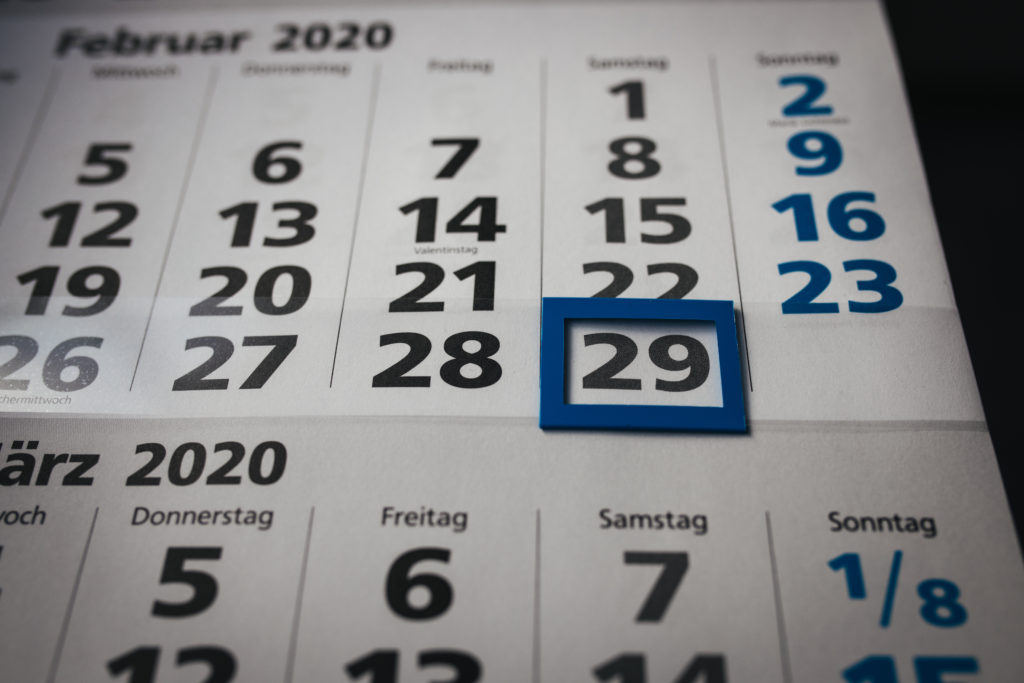A leap year has 366 days instead of the usual 365 days.
We refer to a year as being a leap year when February has an extra day. February 29th is often called a leap day.

Why do we have leap years?
It's all to do with the Julian or Gregorian calendar ( which has 365 days ) and how long it takes the Earth to complete one rotation around the sun.
It takes the Earth 365.24 days ( 365 days, 5 hours, 48 minutes and 46 seconds ) to orbit the Sun, but the Gregorian calendar has only 365 days in a year. If we didn't add a leap days we 'd be around 6 hours short of the New Year each year meaning that our seasons would soon become out of sync with the months.
After 100 years we'd be 24 days out of sync...if that carried on our seasons would be completely switched around in just a few centuries. It would all be very confusing.
What is a leap day?
February 29th is the leap day. It only occurs every 4 years!
How do you know if it's a leap year?
The last two digits must be divisible by 4, although century years are an exception.
Is a leap year every four years?
Leap years are almost every 4 years, but there are some exceptions.
Leap years must be divisible by 4, but if the year is divisible by 100 ( century years ) it must also be divisible by 400. 2000 was a leap year, 1900 was not!
More science of the calendar
Find out what the summer solstice is and make your own sundial!

Last Updated on May 17, 2022 by Emma Vanstone

Leave a Reply